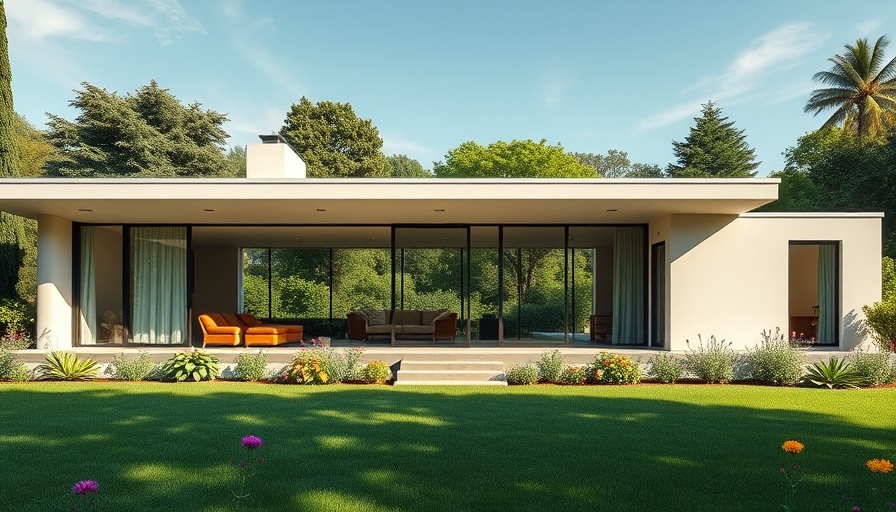
Reviving Midcentury Charm for Modern Living
As families evolve, so do their living spaces. The midcentury modern style, with its clean lines and functional design, is experiencing a resurgence as contemporary families seek the perfect blend of style and practicality. This design ethos isn’t just a trend; it’s a lifestyle that marries form with function, creating homes that are not only visually striking but also deeply livable.
Historical Context: The Allure of Midcentury Design
Midcentury architecture, primarily flourishing between the 1940s and 1960s, introduced an architectural approach focused on simplicity, integration with nature, and open floor plans. Not only does this style boast a rich history, but it also tells a story of innovation in design, aiming to create an environment that resonates with the organic world. Since these homes often feature large windows and seamless indoor-outdoor transitions, they embody a refreshing blend of bright, inviting spaces that appeal to families today.
Why Families Are Embracing Midcentury Homes
Families are drawn to midcentury homes for various reasons. Firstly, the design's functionality addresses modern needs, with ample storage and versatile spaces that adapt to changing family dynamics. Open floor plans facilitate interaction, making it easier to connect with loved ones during daily routines. Secondly, there’s a growing commitment to sustainable living—many midcentury homes are built with eco-friendly materials and feature better energy efficiency now due to updated technologies, appealing to environmentally conscious homeowners.
Embracing Sustainable Living and Design Trends
In addition to its aesthetic appeal, midcentury design is also becoming synonymous with sustainability. Homeowners today are replacing old appliances and integrating solar solutions, ensuring their homes reflect their values. Incorporating retrofitting options also allows these homes to function efficiently for modern family needs without sacrificing their original charm. As sustainable building practices continue to reshape home construction, midcentury homes are often seen as a template for how to harmonize aesthetics with environmental responsibility.
Practical Tips for Renovating a Midcentury Home
For those looking to invest in or renovate a midcentury home, consider strategies that highlight its unique features while meeting contemporary needs. Here are some practical tips:
- Maintain Original Details: Preserve key architectural elements like wood beams and unique fixtures to retain authenticity.
- Modern Updates: Where possible, update kitchens and bathrooms with contemporary fittings that complement the original design.
- Integrate Technology: If energy efficiency is a priority, blend modern technology seamlessly into the home’s infrastructure.
Exploring Real-Life Midcentury Transformations
Several families have successfully rejuvenated midcentury homes, balancing respect for their unique heritage while infusing modern living requirements. For example, one family chose a modest three-bedroom midcentury home and transformed it with eco-friendly renovations that resulted in lower energy bills. Each decision was made with care to respect the home’s history and the original architecture.
Conclusion: A Home that Grows with You
Midcentury homes remain a relevant choice for modern families, representing a thoughtful blend of style and sustainability. As families aim for spaces that foster community interaction and personal engagement, midcentury homes stand out as an ideal solution. By embracing renovation practices and sustainable living, families can breathe new life into these charming structures, creating homes that reflect both their needs and their values.
 Add Row
Add Row  Add
Add 




Write A Comment